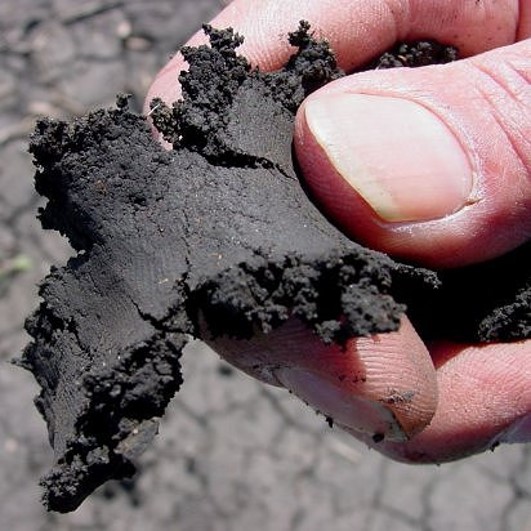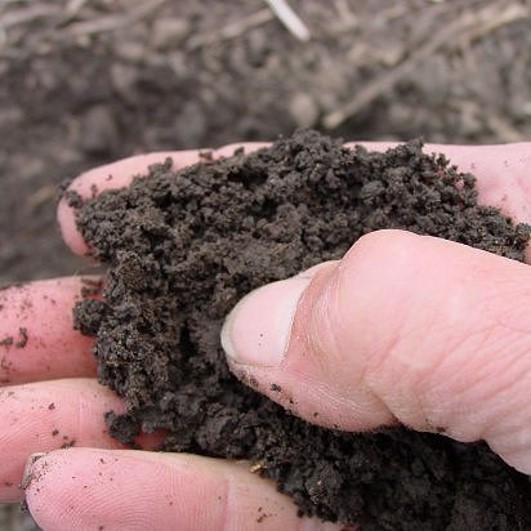Planting into wet soils or working soils too wet can cause smearing of the seed furrow sidewall, sidewall compaction from the disk openers, and a seed trench that does not close (see Figures 2-4). This can cause uneven crop emergence.
Compacted soil restricts corn and soybean root systems and causes uneven emergence. Restricted nodal root systems will reduce the plant’s ability to uptake water and nutrients, lowering yield potential (see Figure 5).
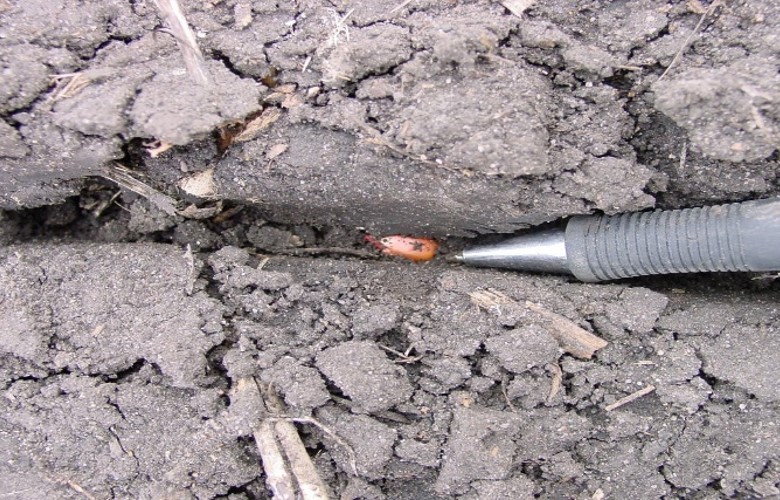
Figure 2. A soil that was too wet to plant, leaving the seed trench open and the seed exposed.
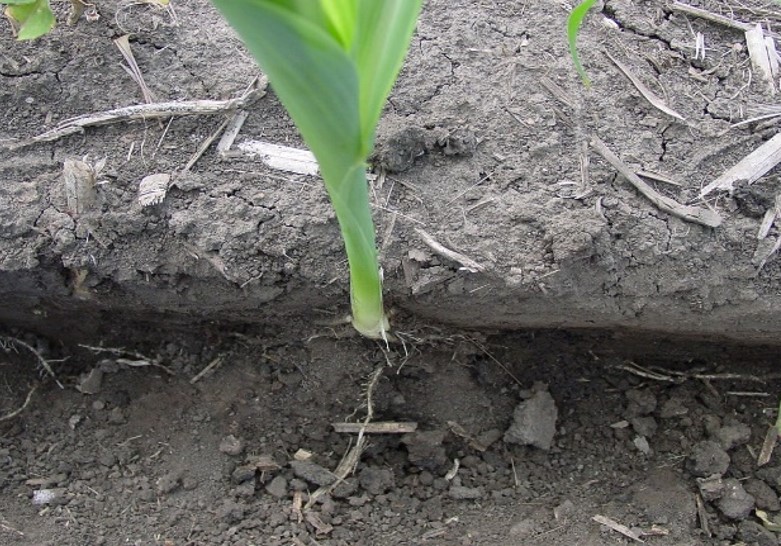
Figure 3. Wet soils at planting can lead to sidewall smearing that restricts optimum nodal root growth and yield potential. Note that the roots of this corn plant are running horizontally along the seed trench
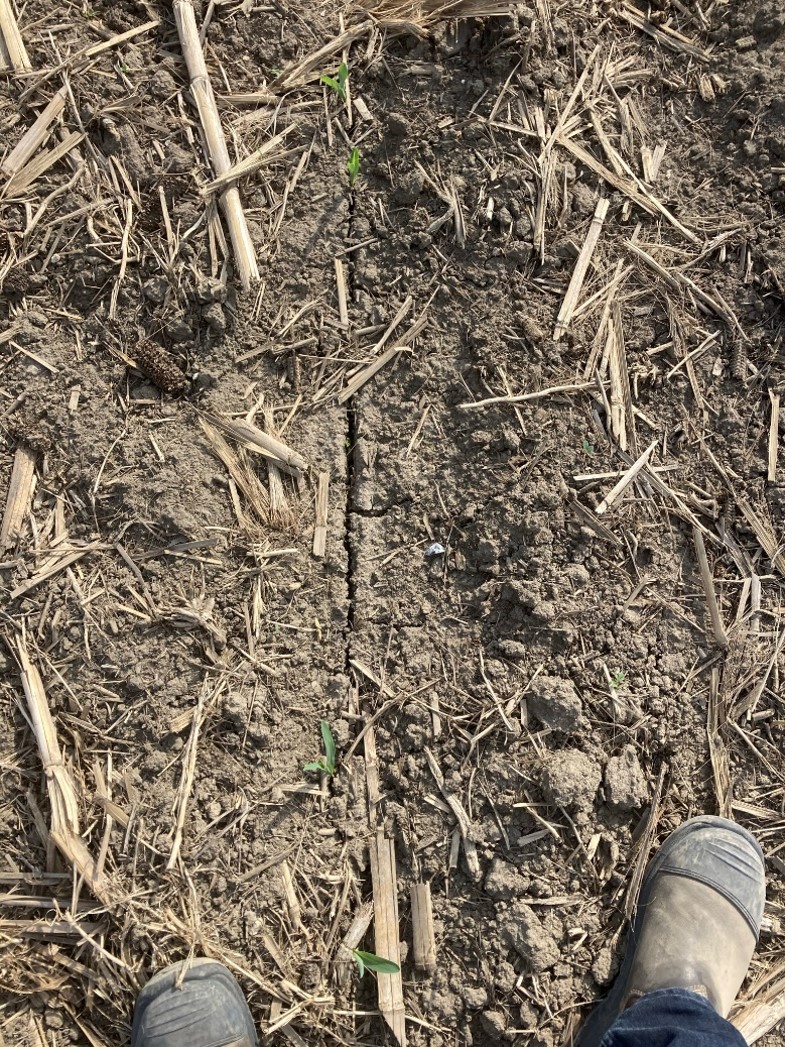
Figure 4. Planting into wet soils caused an open seed trench resulting in uneven emergence and poor stands. Blue arrows indicate emerged corn plants. Photo from Paul Hermans, Pioneer Agronomist.
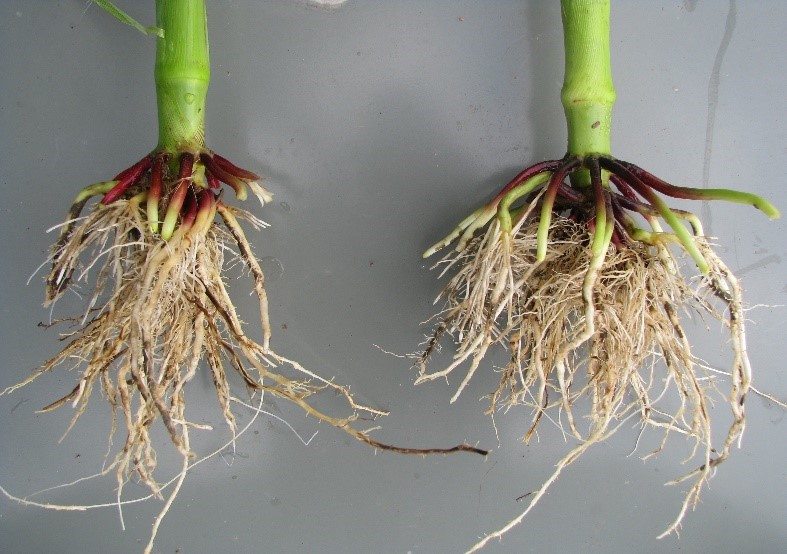
Figure 5. The roots on the left are from a plant that experienced sidewall smearing – notice how the roots are concentrated directly underneath the stalk and do not branch out horizontally. The roots on the right show what normal roots look like – notice the greater root mass and more even distribution across the area.








